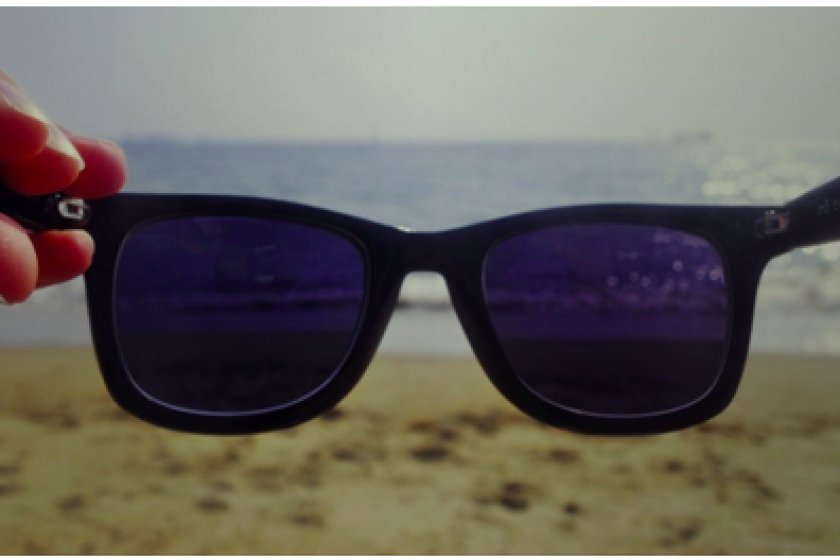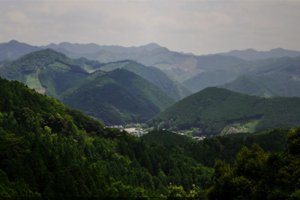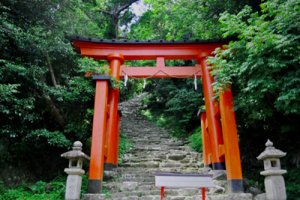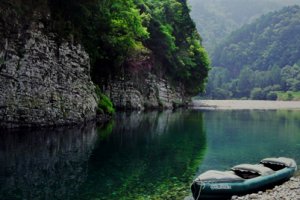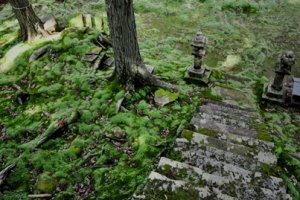Virginia from Spain was amongst the selected applicants for the Japan Travel Photojournalism Internship in summer 2013. In her early 20s at the time, she was mostly interested in travelling, film, indie music, and pizza!
As part of her journey though Japan, she had expressed a strong interest to visit Wakayama Prefecture. As the Wakayama Regional Partner I welcomed her in Tanabe in July 2013, and so our journey together, a few days of exploration and discovery, began.
I prepared accommodations and meals for the duration of the 5 days that Virginia stayed with me, and I also made appointments for visits to all the places that I wanted her to write about. My aim was to give her the best possible experience and allow for exposure to a great variety of landscapes, people and sights in my local area.
Virginia embraced the full schedule enthusiastically and she made the most of each visit, happily snapping away photos with her Nikon D5000 and taking notes for the articles to be written later on her HP Notebook.
We went to some well-known places but also to those places that only locals would know. I also took her to my house, to my friends and to my monk teacher’s temple. She visited the famous sights but she also got to know the Kumano area seen through the eyes of a local and visited places that tourists would never find by themselves.
Virginia also had some days in Tokyo before coming to Kumano and she moved on to Hiroshima and Matsuyama after her stay on the Kii Peninsula.
Now, 8 years later, Virginia still loves travelling, photography, film, and pizza! She now works as an analyst for a social networking service company which leaves little time for travelling.
Recently Virginia and I had a chance to reminiscence about our trip together. She said it was the "coolest trip ever" which I take as a complement.
It was a busy schedule for sure, and a lot of driving for me. I am thankful to all my friends who supported Virginia's trip and let her stay at their houses and offered food and other support. As the Regional Partner Wakayama I am proud of this support from the local community.
I was also very happy that Virginia wrote many articles about the Kumano region. In 2013 the Kumano area was not a must-go destination yet. There were only few international visitors to the Kumano Kodo pilgrimage trails and hardly any monitor tours were run by local, regional or central government that invite professional writers, tour operators or influencers in order to promote the area.
Virginia and I had a "private monitor" so to speak, run by a local foreigner who loves her home in Japan, and attended by a visitor from abroad who came with a lot of curiosity and the big dream to become a photojournalist.
For me, this is the way forward to truly promote rural Japan in an intimate and personal way!
I love Virginia's photos!
They truly reflect her connection with the Kumano area and, as a photographer, her great attention to often overlooked details.
Here is a summary of Virginia’s itinerary in Kumano (Tanabe, Hongu, Shingu, Nachi) as reflected in the articles she posted:

Day 1
Virigina explored Hongu, a small town of 2,500 people which is located in the south of Wakayama Prefecture on the Kumano Kodo pilgrimage trail, roughly half-way between Tanabe City and Shingu City. Many visitors to the area walk the Nakahechi route of the Kumano Kodo and they start from near Tanabe, walk in direction of Hongu and then continue on to Shingu or Nachi.
Virginia did not walk but I picked her up and we drove from Tanabe Station to Hongu Town where I have been living for over 10 years now. The journey by car takes 1.5 hours, or longer if one takes the local bus. If you take the train from Osaka to Tanabe and then the local bus to Hongu, a whole day is needed for access.
There was little time to do much else on this day. I just showed her around Fushiogami, which is the village I have been living in, and we did a short hike along the Kumano Kodo trail from Hosshinmon-oji back to Fushiogami Village, which is about 3.5 km. Virginia stayed locally at my neighbor's house.

Day 2
The next day I took her to Hongu Town, which is a kind of "center" in this area. Here is where shopping takes place and where a few restaurants are open during the day. These eateries cater to day tourists and are closed in the evening. There is no convenience store here either but only a Yamazaki shop which closes at 7.30 pm. The most popular shop is a KONAN store and the ACOOP supermarket. The former is right in the middle of Hongu but the latter is a drive away. This is how "convenient" this place is, not!
Hongu Town is a popular destination for tourists because the Kumano Hongu Shrine, one of the Three Kumano Grand Shrines (Kumano Sanzan) is located here. We visited the shrine and then went to the nearby Heritage Center to learn more about the history of the Kumano Kodo pilgrimage.
Many visitors do not spend much time in Hongu but they just pass through. Hongu is a transport hub. Busses depart from here to different directions, including Shingu and Tanabe. These are the two major cities in the south of Wakayama which are located on the opposite sites of the Kii Peninsula. There is also a bus that crosses the mountains right through the middle of the peninsula. This bus is bound for Gojo and Yamato-Takata in Nara Prefecture and it passes through Totsukawa Village. The bus terminal in Hongu is right by the Heritage Center opposite the Kumano Hongu Shrine.
I took Virigina on a drive around the area and we went to Deai no Sato. There is an old farm house and a newly built log house. The farmer-owner of this place has been engaged in organic farming for years. He also has an egg farm and he rents out the old farm house. Hardly any foreign visitors to Kumano come here though as access is only possible by car.
Virginia stayed at the Kumano Backpackers Guesthouse. It is run by the owner of Cafe and B & B Hongu, a good friend of mine. The guesthouse is a little cheaper than the pension. At the time these two accommodations were the only option for those who wanted to stay in Hongu rather than moving on the the nearby hot spring villages.

Day 3
I picked Virginia up the next morning and we drove to Tamaki Shrine. It is a famous Shrine but it is not on the radar of foreign visitors because access is difficult. From Hongu one has to drive to Totsukawa Onsen first and from there it is a 10 km winding route up a 1,000 m mountain to get to the car park of Tamaki Shrine. From the car park it is still a 20 min walk to the shrine proper where we had a good look around. This took us the whole morning.
We drove back to the Hongu area and to the office of the Kumano River Boats Tour, which at the time was in Kanmaru Village. Mind you, now it is in a different location! Virginia took the popular boat ride to Shingu down the Kumano River. It is a guided tour and takes 2 hours. At the same time I drove to Shingu by car and picked her up there. After landing near the mouth of the Kumano River where it flows into the Pacific Ocean, those on the boat are usually picked up by the boat tour operator and transported to nearby Hayatama Shrine, the second of the Kumano Three Grand Shrines. We also visited this shrine and then made our way to another sacred place in Shingu, the Kamikura Shrine. This is the older shrine and it is situated on a hill. From a terrace up there visitors have a great view over Shingu. In the late afternoon we continued our journey by car to Nachi where the Nachi Waterfall is located and also Nachi Shrine, the third of the Three Kumano Grand Shrines.
At the end of the day we drove from Shingu back to Kanmaru and then to Koguchi Village where Virginia stayed at the house of a friend. We covered long distances which is only possible if you have a car, either rented or your friend's. On public transport it would be very difficult to have the same number of experiences in one day.

Day 4
This was a "rest day" for Virginia and also for me. No long drives and no sightseeing today. In the morning we went for a walk in the Koguchi area. The trail we walked was not the Kumano Kodo trail that leads from Koguchi no Nachi but we followed some abandoned trails that only locals know. In the afternoon we met a group of my friends who live nearby and who own kayaks and SUP boards. We had great fun together kayaking in one of the rivers in Kumano. We stayed at the temple lodging of my Buddhist teacher.

Day 5
A long drive took us from Koguchi to Tanabe where I took Virginia to Tanabe Train Station and explained how buying a train ticket works and then I checked her in at Buddha Guesthouse where she would spend her last night in Kumano. I had to drive back but Virginia explored Tanabe by herself, and since it was very hot, she made her way to Ogigahama Beach, which is located in walking distance from the city center. In the evening she joined the Tanabe Festival, a summer festival, and had great fun, before she moved on to her next destination in Japan.

